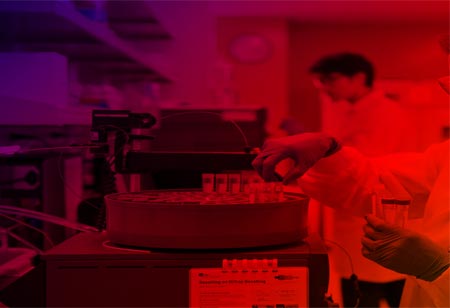Chemical engineers' imaginative and pioneering efforts have been responsible for developing a complex array of chemical conversion processes.
FREMONT, CA: Chemical engineers have been at the front line of innovation in energy production. They have devised methods for the use of renewable as well as nonrenewable feedstocks. A broad range of chemical-engineering principles is employed to produce electricity and different fuel types for transportation, industrial, and residential objectives.
Traditional refining
Crude oil, or petroleum, is used briefly in its raw state. Its value to society rests in the broad slate of products that can be formed from it. Refineries employ complex chemical detachment and transformation procedures to convert crude oil into gasoline, diesel and jet fuel, kerosene, lubricating oils, and many other end products.
Producing Energy from Fossil Fuels
Chemical engineers' imaginative and pioneering efforts have been responsible for developing a complex array of chemical conversion processes. These processes create physical changes in crude oil and natural gas, yielding the many end products we depend on today. These products range from gasoline and diesel fuel to kerosene, lubricating oils, waxes, asphalt, and many intermediate petrochemical products.
Chemical conversion procedures
Some of the significant chemical method operations instrumental in modern-day refining include
• Thermal cracking,
• Distillation,
• Fluid catalytic cracking,
• Hydrocracking, and
• Performing.
This list is only representative, as the total number of petroleum-refining activities to which chemical engineers have significantly contributed is very large.
Refining the refineries
The chemical-engineering community is constantly working on modifying and improving the petroleum-refining processes. Their objectives are to
• Achieve higher conversion rates and greater yields,
• Improve overall energy efficiency,
• Produce cleaner fuels,
• Reduce refinery emissions, and
• Reduce operating costs.
Synthetic liquid fuels
To lower our reliance on foreign oil, chemical engineers have been working powerfully to develop, scale up, and commercialize new procedures to produce synthetic liquid fuels.
Synthetic fuel production
Two routes are utilized to generate synthetic liquid fuels:
1. The Bergius method, which utilizes hydrogen and brown or soft coal, and
2. The Fischer-Tropsch method initiates with carbon monoxide and hydrogen.
Chemical engineers have been instrumental in developing both of these technologies.
Biofuels
Chemical engineers are concerned with developing technologies to transform renewable biomaterials into electricity and transportation fuels, just as they have been with nonrenewable fossil fuels. Corn and sugar are presently more employed to generate ethanol, a gasoline alternative. And soybeans are being employed to produce diesel fuel.
Power from Plants
Biomass is plant material—fast-rising trees and grasses, grains, corn, sugar cane, wood scrap, woody leaves and stalks, and garbage. It is a sun-reliant renewable feedstock that can be utilized to produce biofuel. This fuel type can be transformed into gaseous and liquid fuels for electric power production and automobile propulsion.
Bushels into barrels
Chemical engineers have been instrumental in developing and commercializing processes that allow bushels of biomass to become barrels of fuel. They will proceed to play an increasingly important role in achieving greater energy self-sufficiency with more eco-friendly, renewable sources of fuel and electricity.
Ethanol
Made by fermenting biomass rich in carbohydrates (starches and sugars), ethanol is a gasoline-like alcohol. It is currently finding wide use in producing a gasoline-ethanol mixture, raising octane while reducing pollutants. With engine modifications, it can be used as a direct gasoline substitute.
Biodiesel
Biodiesel is a useful alternative to conventional diesel, made from vegetable oils, animal fat, and recycled cooking grease. Multiple diesel engines that can use this renewable fuel with no difference in performance are already available. Biodiesel is also intrinsically cleaner than fossil-fuel diesel.
Electricity from biomass
Renewable feedstocks, like forest and agriculture residues, landfill gases, and municipal wastes, can generate electricity. Four primary methods are now being employed:
• Direct firing, where biomass is burned instantly;
• Co-firing, where biomass is blended with fossil fuels;
• Biomass gasification converts biomass into synthetic gas; and
• Anaerobic digestion enables biomass decay to yield methane, the main component of the natural gas we burn today.
Electricity from coal
Coal fueled the Industrial Revolution and, for years, was the main power-plant fuel. Chemical engineers have been working to present greener choices for generating electricity from coal. With significant environmental benefits, some power plants now induce power by employing coal gasification as an intermediate step rather than coal combustion.
Making coal greener
To present greener options for yielding electricity from coal, chemical engineers have made great strides. They have achieved significant environmental improvements by developing integrated combined-cycle gasification (IGCC) power plants. These plants generate power first by coal gasification and then by restoring the gas to power rather than using traditional coal combustion. Pollutants are lowered, as is water consumption.
Two-cycle generation
In IGCC power plants, coal first became synthetic gas. The syngas is cleaned to eliminate unwanted pollutants and then burned in a gas turbine. The depletion from the main turbine is employed to make steam for a secondary turbine that produces extra electricity.

